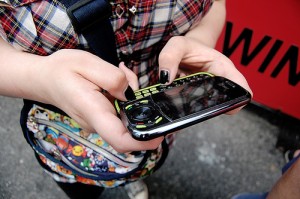By Jennifer Roland
Teens are savvier than we might give them credit for when it comes to knowing their privacy boundaries on social networking sites. According to a recent Pew Internet study, 62% of teens surveyed said their posts can only be seen by friends, and 19% said that their profile is "partially private so that friends of friends or their networks can see some version of their profile."
Still, digital citizenship entails more than just protecting oneself. Incidents of cyberbullying and harassment continue to occur regularly, and some states are taking drastic measures to stop kids from harmful behavior like sexting -- in South Carolina, kids age 12 to 17 who "transmit sexually explicit photos" may be fined $100 if a bill is passed.
Somewhere between kids' intuitive social savvy and their online behavior lies an opportunity for both parents and educators to teach responsible digital citizenship, and there are plenty of organizations dedicated to this task alone. Define the Line, a project of McGill University in Canada, was recently awarded a digital citizenship grant by Facebook to help further its work in creating materials to open dialogue about finding the line where joking crosses into negative or criminal behavior. The site includes videos and scenarios designed to enhance discussion of real-world digital topics.
Common Sense Media recently launched a free digital citizenship curriculum categorized by age. The curriculum includes both paper-based and digital activities and teaches online safety and Internet research skills in combination with ethics. CyberWise offers resources to help adults be more tech savvy so they can understand the power of the tools their kids are using and do a better job of helping their kids make smart choices online. And the Department of Education's Netcetera handbook is another resource for parents that schools distribute.
PRACTICING GOOD CITIZENSHIP


